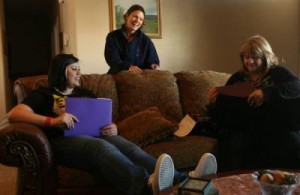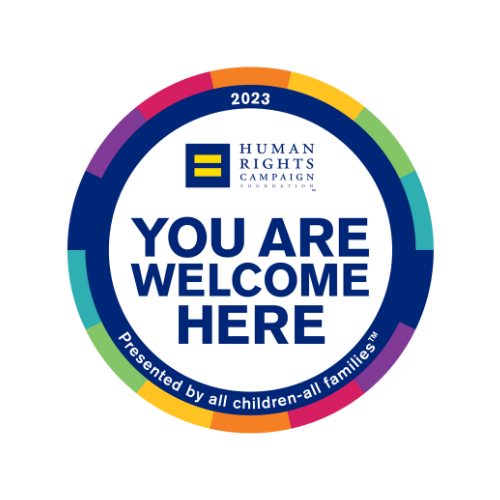As the need for foster parents willing to care for teenagers continues to grow, we’re thrilled to have the Salt Lake Tribune on the side of these wonderful children. Despite the many misconceptions surrounding teenagers in the foster care system, at Utah Foster Care Foundation we know that they are just like every other child–they need someone who is willing to love them, care for them and open their home. These teenagers just need a parent. They’re normal kids and they just want someone to love them.
Read the story below and get to know Bianca Flores, a NORMAL teenager in foster care. Like Bianca, other teenagers in foster care are there because their own parents are unable to provide for the essential wellbeing and need some time to work things out. Now, Bianca is facing the trouble of aging out of foster care with nowhere to call a permanent home.
When you read her story, we hope that whether you are considering becoming a foster parent or are already a foster parent, that you will pick up the phone and call us to find out how you can help teenagers like Bianca by giving them a place to call home, whether it’s temporary or permanent.
-Amy O.
Marketing & Social Media Manager
Utah Foster Care Foundation
Life after foster care is an uphill battle
by Brooke Adams
The Salt Lake Tribune
05/05/2010
Until she entered foster care, Bianca Flores was too busy tending to her three younger siblings to attend school.
Her mother was either sick or MIA, gone for nearly a week at a time. There was no dad — never had been.  So Flores filled in as best she could, putting her own life on hold.
So Flores filled in as best she could, putting her own life on hold.
But since January 2009, Flores has powered through three years of high school credits, and this spring she will do what seemed unimaginable a year ago: Flores, 18, will graduate from high school, the second person in her family to do so.
Next up is an even bigger challenge — at the end of August, Flores will exit the state’s foster care system and become a student at Snow College, where she plans to pursue a degree in graphic design.
If Flores succeeds, she will be defying the odds.
Numerous studies, both here and in other parts of the country, have highlighted the struggles of youth who age out of foster care, finding they are more likely to be homeless, unemployed, under-educated and in jail. One report released this month found nearly 60 percent of young men had been convicted of a crime, compared with 10 percent of young men who had never been in foster care. For women, three-quarters were on public assistance by age 24.
The new study, by researchers at the University of Chicago and University of Washington, is the largest, most comprehensive study of young adults leaving foster care in two decades. It comes as a new federal initiative — starting this year — requires states to track outcomes of youth once they leave foster care.
That federal database will require states to do a census of at least a sample of 17-year-olds in foster care and then check at ages 19 and 21 to see how they are doing in six areas: income, education, homelessness, positive adult connections, high-risk behavior and access to health insurance.
Utah plans to track all children, not just a sample of youth. The state also plans to check in with youth yearly from the time they turn 17 and evaluate their use of a broad array of services.
“We felt that was a service we were providing to youth and thought how could we provide it to some but not others,” said Navina Forsythe, evaluation director for the Utah Division of Child and Family Services.
 A 2006 DCFS study looking at life after foster care, currently being updated, mirrored the national results. The study reviewed cases of 926 youth who aged out of foster care between 1999 and 2004. Few were able to finish vocational or college educations. Many wound up in low-paying jobs.
A 2006 DCFS study looking at life after foster care, currently being updated, mirrored the national results. The study reviewed cases of 926 youth who aged out of foster care between 1999 and 2004. Few were able to finish vocational or college educations. Many wound up in low-paying jobs.
More than a third had been arrested for a felony or misdemeanor crime within three years of leaving foster care. For females, a third had given birth within that same time period.
The study also found that 57 percent of the youth who left foster care since 2002 were diagnosed with a major mental illness.
The national study, released in April, showed federal incentives that allow states to extend foster care services to age 21 might not be enough to prevent poor outcomes — that in reality, these youth need support for a longer period.
“What is clear is that substantive policy changes need to be made to do justice to the complex needs of former foster youth,” said Mark Courtney, research and development director of Partners for Our Children at the University of Washington, in a statement.
DCFS caseworker Mindy Leonard said Flores is one of the “few and far between” youth she has worked with who has the puzzle pieces in place for success.
Flores hopes to land an Olene Walker Scholarship, available to youth who are college bound after leaving foster care, that will provide $5,000 a year for four years. Flores also is eligible for Pell Grants. And dorm life will provide some structure.
Flores also has a good support system — her mentors include former Miss Utah Heather Anderson, her religious youth group leader Kristy Hodgson and foster parents Michelle and Daren Williams — which is key to post-foster care success.
Flores admits the prospect of college is “overwhelming” — but so was going into foster care.
“Honestly, I’m a pretty shy person,” Flores said. “When they told me I was going to have to go into a foster home, I made myself not a shy person.”
Leonard expects Flores’ drive and tenacity will help her succeed academically and socially at college.
“She has a lot of initiative,” Leonard said. “Anything you offer her, she jumps at. The motivation in this girl is amazing.”
More often, youth who age out of foster care just want out, period, she said.
“Every kid has available what Bianca has,” Leonard said. But, “When you take a kid who has had trouble their whole life and try to fix things, it often doesn’t work well.”
Flores wasn’t happy about being separated from her siblings — including one born after she entered care — who went to different foster homes, though she sees them and her mother regularly.
But if that had happened, she said, “I wouldn’t have had as much focus and effort on my high school career.”
“For some kids it would be hard to not be with your family, and it has been,” she said. “It’s been hard to not have to care for my siblings any more.”
But at the same time, she said, it was hard not having a shot at shaping her own future.
brooke@sltrib.com
Leaving foster care
Nearly 30,000 young people nationwide — and 300 to 400 in Utah — age out of foster care each year. In most states youths must leave the foster care system when they turn 18, though some states allow them to continue accessing services until they turn 21.
Utah’s foster care system currently has custody of 186 youths who are 18. Most will be emancipated once they graduate from high school. There are just 57 children in state care who are 19 and five who are age 20, according to the Division of Child and Family Services.
“We do have some children who can stay in [custody] longer but it is really up to a court order,” said Navina Forsythe, DCFS’ evaluation director. Many of those teenagers who remain in foster care have medical or mental health issues, she said.





